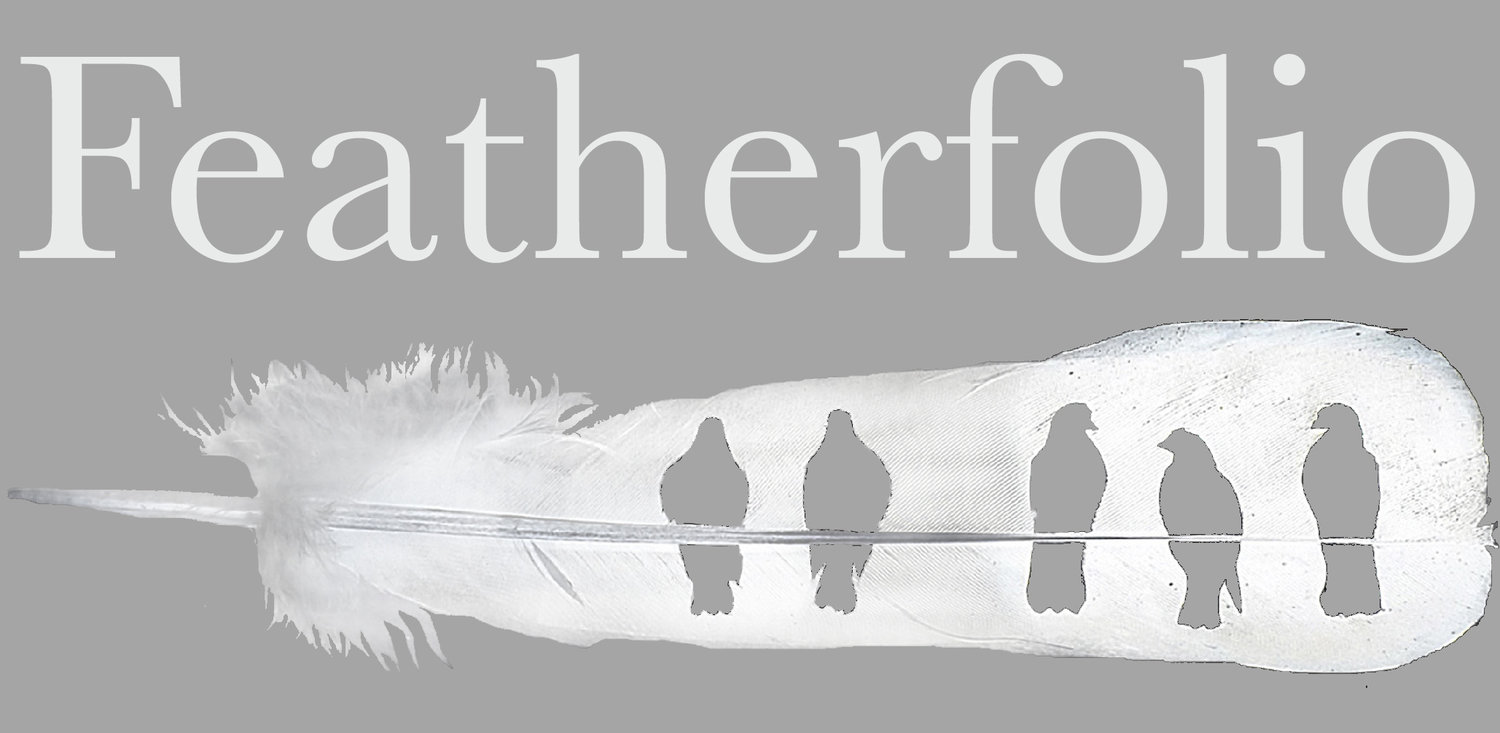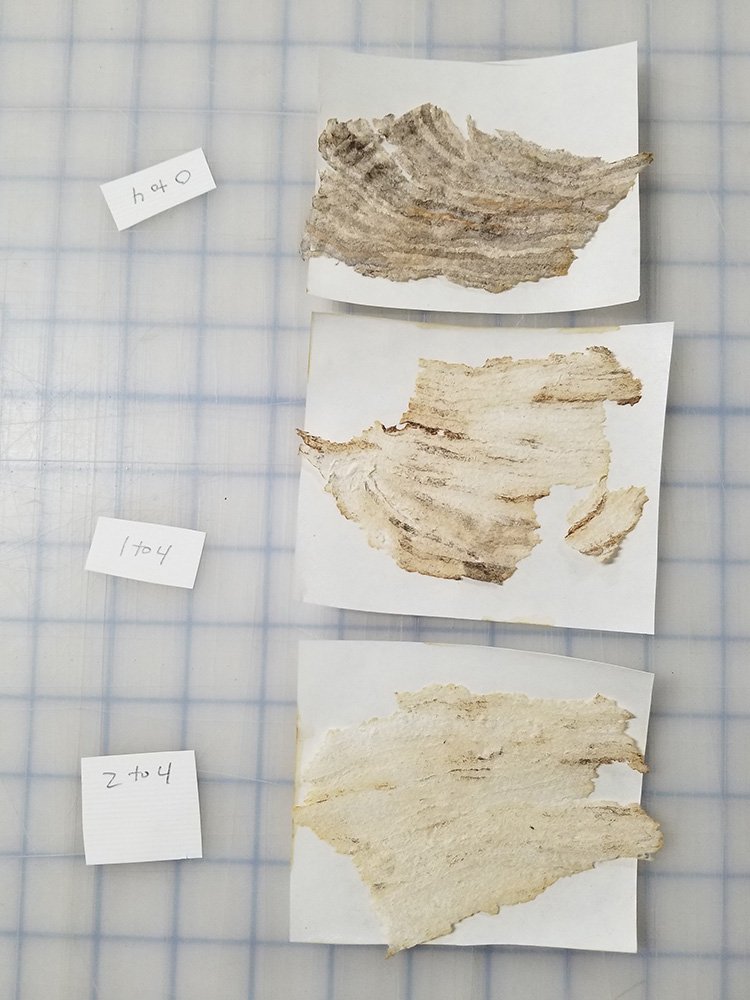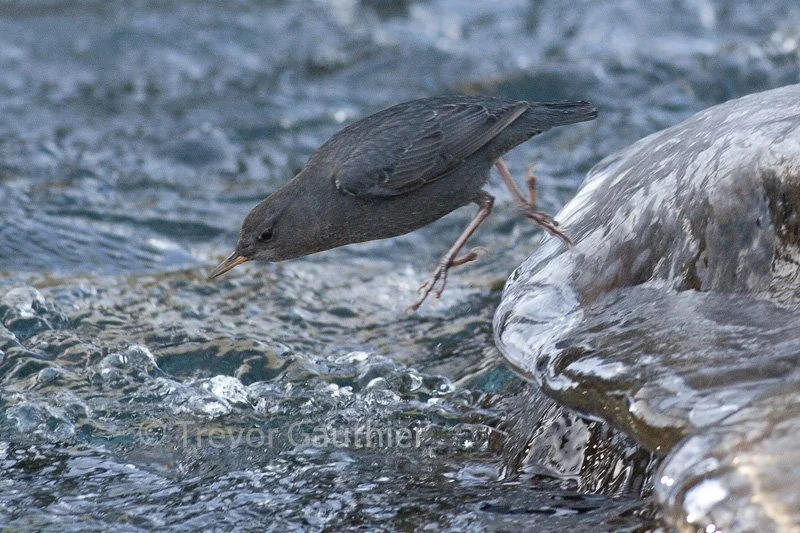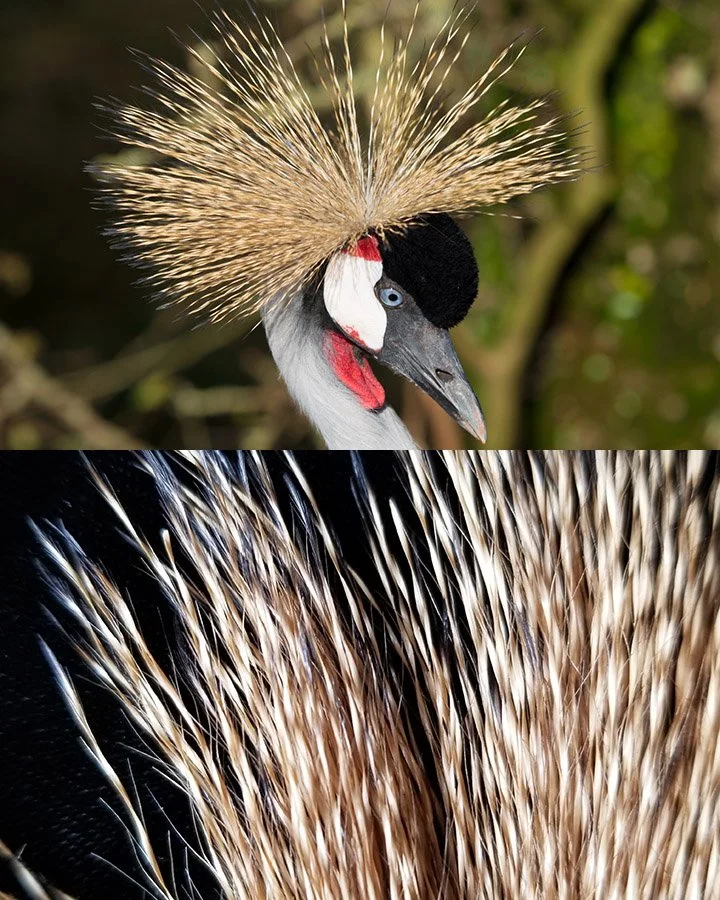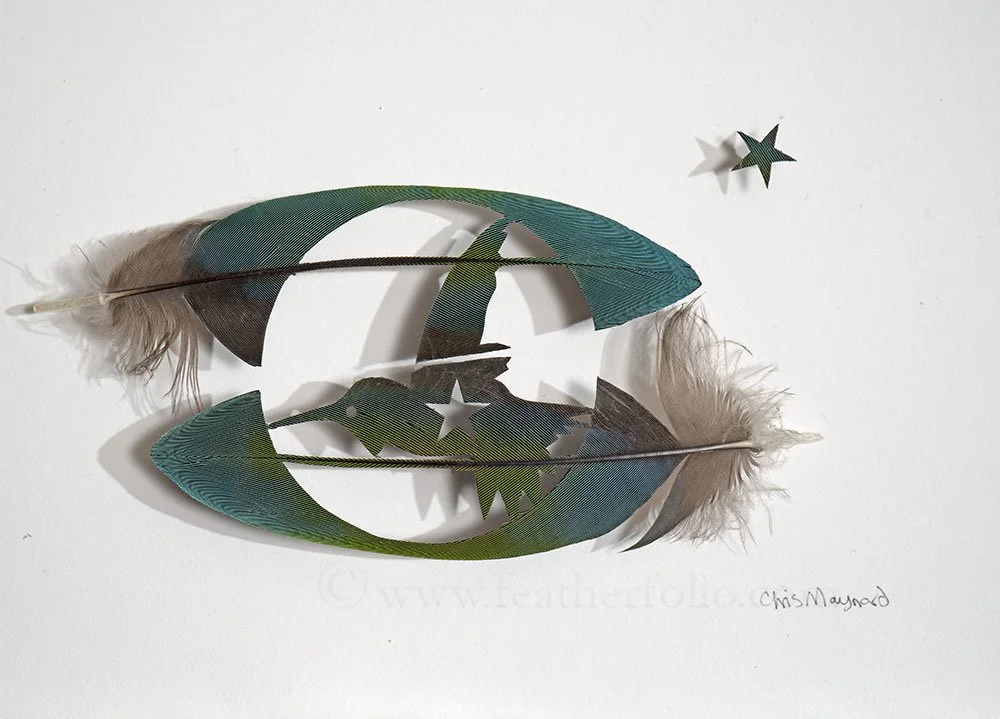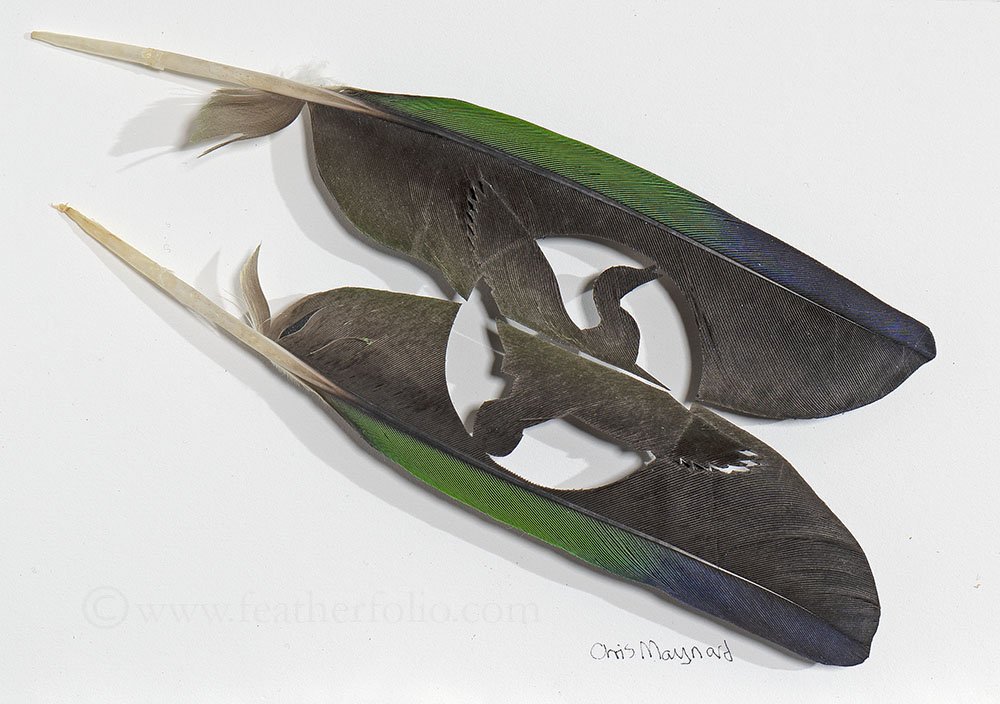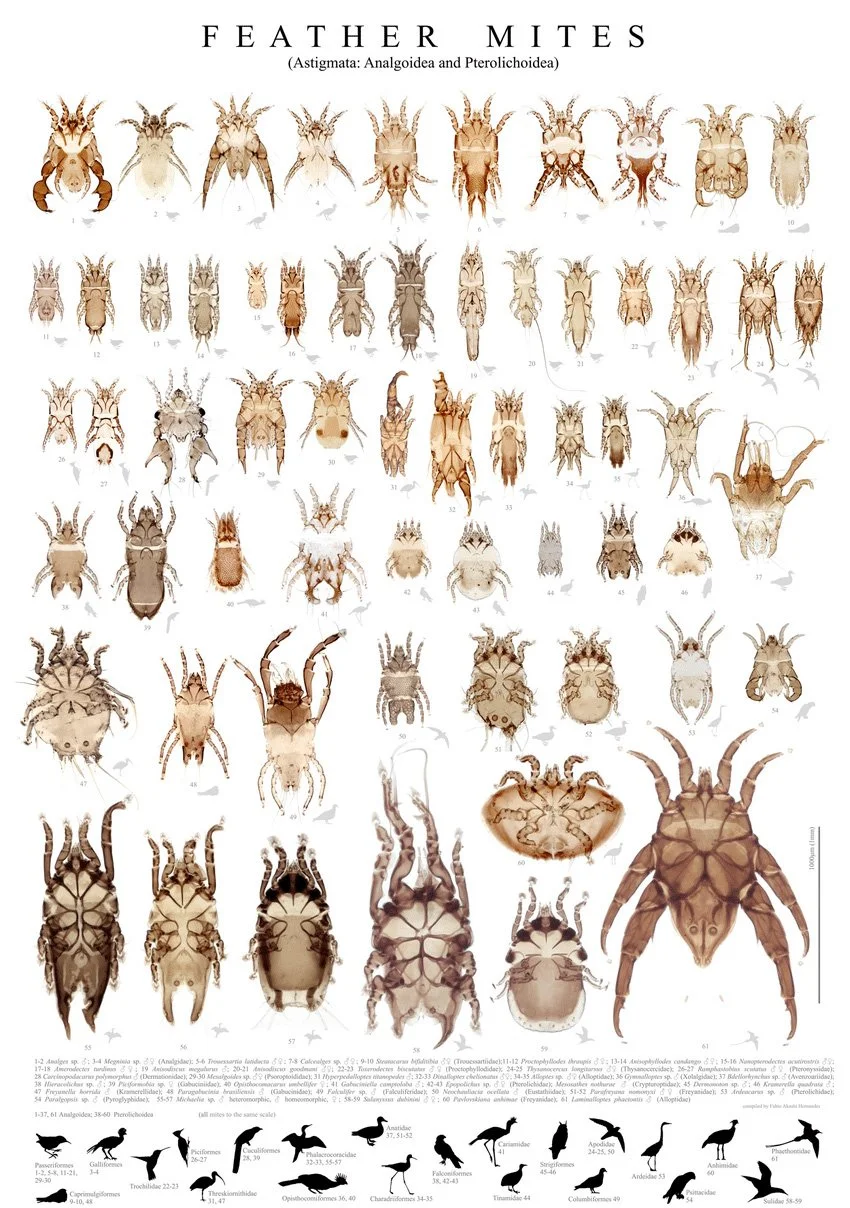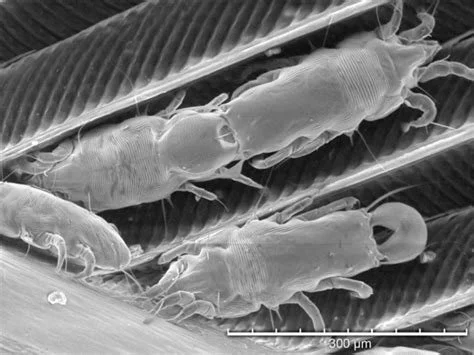Keeping your arms straight, hands open, swing them fast around and around. Feel the air? For a bird, the thickness and palpability of the air must be a little bit like water feels to us when we swim. Birds need to feel the air currents going past the tips of their wing feathers to be able to respond to the needs of flight. Their long flight feathers act as levers, transmitting the sensation of air pressure to the nerves in the birds' bodies at the bases of their feathers.
How to use wasp paper to make your own /
Wasp paper, bleached
Wasps make paper out of chewed up wood mixed with their saliva. They fly back to their under-construction nest and carefully spit out the saliva/chewed wood pulp in long bands somewhat like caulk coming out of a caulk-gun but instead it is out of their mouths. They use varying convenient sources for their wood which often makes the pulp they bring back differ in color, usually greys and browns. Sometimes they find a white wood source or even bright colors like red if they decide to chew on something like construction paper (which is made of wood pulp and dye).
I have used wasp paper nests as backgrounds to a few of my cut feather shadow-boxes. I carefully unlayer a wasp nest, iron the individual layers, and use a brush and diluted acrylic matte gel to paste the pieces of wasp paper to a heavy cotton watercolor paper.
The final paper has a dark stormy feeling but it is often darker than I want for my feather cutouts.
I just figured out how to lighten the wasp paper with bleach and not have it fall apart. First, I experimented with different nest and was surprised that each nest and pulp source bleached differently. For some, the darker brown bands of chewed wood/spit did not bleach at all while surrounding bands of greyer material did. The bleaching works very quickly so I didn’t vary the soak time, just dipped the paper in and out. I did use different dilutions of laundry bleach to find what worked best. Depending what you want, you might try 1 part bleach to 4 parts water, 1 part bleach to 2 parts water, or less, say 1 part bleach to 6 or 8 parts water. The trick is to place a non-stick paper underneath the wasp paper in the bleach. Then when the non-stick paper is pulled out and the wasp paper dries, it doesn't stick. The non-stick paper I use is from the backing that I use for double sided adhesive which are like large sheets of double-sided sticky tape. I use Scotch 3M Positionable Mounting Adhesive No. 568. It is spendy, and you probably don’t need the adhesive part, so you might try wax paper or the shiny side of freezer paper. I would be interested to know if you find something else that doesn’t stick.
The bleached wasp paper dries quickly, overnight in a warm room. I put mine in my dehydrator and it dries within 15 minutes.
Taking, Stealing, and Gifting /
A bird shedding its feathers. Is it gifting a few to me?
I use shed feathers for my art. I don’t need to steal them from the bird. The birds are still alive.
The word, taking can mean different things: taking without asking is stealing. Taking after asking, listening, and receiving permission is like receiving a gift. Do I take/steal a touch without asking because I feel entitled to? Do I give the other person a chance to say no? Do I pause to listen if they are willing? How would I ask and receive permission to kill the plants and animals that I eat? When do we ever ask permission of the land to build on it? And of the earth to take out its minerals? We mostly just go about taking/stealing with the story that we are entitled to everything on the Earth and beyond because we have made up a story to make it easier to take. The story is that humans, and especially certain human are different, separate, and above all other life and things.
The stories we have influence our perceptions. Stories are made of words. To change our behavior, we need a different story, using new words such as one for the act/process of asking for permission, listening, then receiving a gift of permission.
Blue Jays Attack Wasps /
We have huge ant nest hills near where I live, like little volcano mountains a meter high. I noticed A Western Stellers Jay who flew down, picked up an ant, ate it, flew down again for another, and another, and another. Since I like to flatten wasp nest paper onto a heavy cotton paper to sometimes use in my creations, this made me want to research which birds eat not ants, but wasps. A lot of birds catch wasps on the fly but only a few are noted to go to the wasp's nests. Jays are said to do this. I didn't read that they tore apart the big nests like the ones that I use for my paper-making. Instead, they are shown to eat the larvae and wasps in the genera Polistes who make smaller open nests.
The feathers are matched from the wings of a Blue & Gold Macaw and the bird portrayed is an Eastern Blue Jay.
The Water Ouzel: the Dipper and Its Feathers /
The Big Dippers, 19 x 13 inches, consists of two Marabou Stork feathers
American Dipper, photo by Trevor Gauthier
When I took up whitewater kayaking this winter and Spring, I fell in love with the little bird of the rapids, the Dipper. I dressed for the river with insulation and an expensive drysuit while the dipper slipped in and under and out of the water with just its feathers to keep dry and insulated. So I read up on it and learned some fascinating facts.
A previous blog of mine described about how a bumpy feather surface microsculpture repels water through surface tension (envision an ant falling on the water and just floating instead of sinking). Ducks and other water-birds tend to have bumpier microsurfaces on the vanes of their feathers. I imagine that the dipper’s feathers are on par with duck’s in this regard. To further reduce water penetration, especially under pressure as the bird goes deeper underwater, the barbs on the vanes of each feather are spaced closer together (in combination with the barb’s diameter) than non-water birds.
Other ways Dippers keep warm and dry are that their bodies produce more surface oil and more feathers. The oil, that they spread around with their beaks, might keep them warmer in the cold waters. I used to assume that the oil was to waterproof the feathers, but no, not so much. It is more like a feather and skin conditioner. Also, they grow twice the number of feathers as a similar sized songbird, like the Robin for instance, which translates somewhat to having more feathers in your down coat to keep you warm.
Like songbirds, Dippers grow new feathers yearly and shed the old ones. Unlike other songbirds that shed their feathers a few at a time so they can keep flying, the Dipper sheds its feathers all at once, like ducks. They grow back in a couple of weeks.
And the Dipper is the only bird that I have ever heard of that actually has feathers growing on its eyelids. When they blink and these white feathers show, it looks like their eyeballs turn them ghostly.
Keep an eye out for these birds if you are on a clean and fast western North American river. Also, keep an eye out for me floating by in my kayak.
Rigke & Jesser, The Feather Structure of Dippers
A Most Unusual Feather /
Crowned Crane and a closeup of its crest feathers
The Crowned Crane sports what looks like stiff, almost porcupine-thick bristles for its crest. They are real feathers, but like no other. In the enlarged image, my phone was able to take a close enough picture that you can see the regular twists in each shaft. The shafts are flattened twists with only an occasional barb coming out of one side.
How to Eat /
Sky Pilot study, Asian jay secondary wing feather
Books and teachers taught me the pyramid story of how and why us two-legged creatures are on the top. All other life was pictured in the pyramid below, subservient, accompanied with statements about being separate from and better than animals. The statements contained mistaken assumptions that humans are the only intelligent life, the only ones that use tools, who conceive of a god, who make art, who cooperate in complex societies, and who have the power to change the world. And I read that animals aren’t like us because they cannot speak to communicate, laugh, cry, feel emotion, reason, or fall in love.
I believed it for a while and still do sort of, subconsciously. Which I suppose makes it easier to live and work in an industrialized environment. It is easier to kill and eat plants and animals who have led assembly-line production lives.
Now I am realizing how much the pyramid story serves also as a foundation to treat creatures in cruel ways. This includes humans, by imagining and creating separations of higher and lower such as age, race, and a myriad of other fanciful divisions.
I begin to realize that the pyramid idea is just made-up. It separates us, making us callous about suffering. One of the questions that arises for me, is, how do I kill plants and animals to eat? Many people choose to be vegan which is laudable. But isn’t choosing to eat plants and no meat, believing that animals are better than plants? Maybe because they are more like us? Isn’t that a continuation of the pyramid story? Of course, industrial meat usually takes more resources to produce than food plants, but that is not the main reason people tell me they choose to not eat meat. Theirs is more of a gut reaction around a feeling that animals are more like us and therefore more valuable -- because they are higher on the imagined pyramid.
Kudos to people who love their pets and to people who are sensitive to the industrial killing of animals for meat. It is a start of feeling that we are not so separate and apart from these creatures. If the idea of a hierarchy of life is a story we made up, then we are not so independent and superior but instead intertwined with the lives of all other living things, which requires a sacred relationship. We have to eat. Perhaps a path lies not so much in being vegetarian or vegan, but taking lives of plants and animals with the gratitude of receiving life into our own bodies, as our bodies will eventually go into other life forms.
This little cut out bird looks like it might be eating. Or possibly chasing a star, which is sort of what I am trying to do with this essay. I know that there are better ways for our human cultures to relate to earth’s living things, but living in an industrialized culture I am unable to fully jump in and live it.
I long to fly to an alternate culture where we treat creatures as if their breaths were ours and our theirs, because they are.
Feather Size Dictates the Size of the Art /
Three Owls, ocellated turkey feathers 7x5 inches, 18x13 cm
Unlike creating art by employing imagination, brush, and paint, a bird’s feather always stays the same size. I want to create large works of art, but small feathers contain colors, shapes, and patterns not found in larger feathers. So with this size limit, I make smaller pieces, often calling them “studies”, as they sometimes lead to ideas for larger works.
Homage to Turkeys /
Turkey Time, turkey tail feathers
Turkeys are the best! Their tail feathers are well suited for my carving: they are big and thin-barbed; the feathers ship to many countries without the need for additional export permits. But I am mostly grateful for turkeys because they taste good. My neighbor raises heritage turkeys whose fertility is epic. The females wander into her woods in the spring and come back in a few weeks with huge clutches of chicks. By fall or winter, she needs to reduce the extraordinary number of birds she ends up with. Lucky me. There is one bird that never ends up in the pot because she endears herself to every person by being friendly as a dog.
How to Photograph a Feather, the Basics /
female red-tail black cockatoo feather, detail
This advice is about feather structure and applies to whatever equipment you are using, be it a cell phone or a high-end SLR camera.
Two major feather structures require you to adjust your shooting for better photos. The first is the downy part of the feather, usually at the base. The down is so fine that it disappears if the background color is anywhere close to the color of the down. Usually the down is a light color, so it won’t show up on a white background. The solution is not to take a picture on a darker background, then put it in an editing software program like Photoshop. These downy feather parts are so fine, they pick up the background color and it cannot be removed. Believe me, I have tried, used add on software, and consulted with all sorts of professional photographers—and failed. My solution has been to settle for a light neutral grey as the lightest background if I want to preserve the detail and create a lighter background
You can see a couple of examples in these photos of my work on Brenda Houston’s wallpaper. In one of the wallpaper examples, the downy part at the base of the feathers is washed out by the lighter background. Black or any darker color can make the feathers pop. But who wants black backgrounds for everything?
The second basic structure of feathers that influences how they photograph is in the fine detail of the barbs. The downy feathers are barbs but I am writing here about the barbs that make up the flat vane of the feather, above the place on the feather where the downy part is. These barbs are like branches all stuck together. They form tiny ridges running away from the shaft. Just like morning or evening sunlight creates shadows for more interesting photographs, side-lighting the feathers makes little shadows that highlight the little barb structures. Play with the angle, though I find that angling a light to shine across a feather just a little less than 90 degrees preferrable. For my photos, in addition to the side lighting, I often place another light to shine directly on the feather.
Oh, and if you want to improve your image, wash the feather first, unlike the dirty feather at the top of this blog. See my blog on cleaning feathers.
The Duck That Is Not a Duck /
My friend John called to invite me to see the rare Eurasian whooper swan than was visiting some fields 75 miles north of me. I said, “Thanks for the invite but I am going down to the lake to watch some coots.”
Coots are duck-like but not ducks that I and many birders often think of as don’t-get-excited-about, no-account urban-ish shallow pond birds. Actually they are more closely related to the whooping crane than to any duck. They are playful, social, and entertaining.
A woman had asked me to make a piece about these playful coots. I pickup up my binoculars and headed down to our local Capitol Lake. This lake is actually a dammed up estuary at the southern end of Puget Sound. Sediment from the Deschutes (Washington) River that that ends there quickly filled the lake so the water body is shallow and usually scummy. Coots love it!
The commission gave me an excuse to sit for a few hours doing nothing but getting to know coots. Since it was a sunny day, the droplets of water sparkled remarkably when the birds frolicked, hence the inclusion of the feather-water-dots in the piece that I subsequently made.
How and When do Feathers Develop? /
Embryo study #1: Flight Training
Songbirds, hawks, and many birds look naked on hatching. But look closely and they are covered by natal down all over their bodies that they grew when they were in the egg. In the nest about a week or so later, they sport newly grown thermal down. Then, in three or four weeks, juvenile feathers replace the thermal down. These three molts happen before the young birds even leave the nest.
Below is an easy to read article about feather formation from the Raptor Research Project: What are feathers? What is molt?https://www.raptorresource.org/2019/05/19/what-are-feathers-what-is-molt/
Much more detailed information about feather growth is in this article, Development, Regeneration, and Evolution of Feathers
https://www.ncbi.nlm.nih.gov/pmc/articles/PMC5662002/
Our Most Treasured Sense /
Binocs, turkey feather,
Every time I use binoculars, microscopes, and eyeglasses, I appreciate the people and technologies that make them. All our senses give us important ways to know and interpret our surroundings and for most of us, sight seems the most important. It seems that birds are of the same opinion. Like my envy of birds’ abilities to fly, I am envious of their sight. This is because their vision is better than ours in several respects like color perception and movement, though mostly I am thinking of many birds’ visual acuity. For instance, the detail an eagle can see at eighty feet, we would have to be at twenty. As I was writing this, I found myself reading, going down a rabbit hole of studies and abstracts on bird vision. If you feel inclined, the references at the end of this Wikipedia page on bird vision is a good start. https://en.wikipedia.org/wiki/Bird_vision
Winter Hummingbird in the Snow /
Emerald Cruiser
It is 15°F/-9°C and I am worried about the Anna’s hummingbirds. My friend said that a hummingbird was dead on his feeder but I suspect it may have only been in a slowed down torpor state which they do to conserve energy. When I taped a small light bulb to the bottom of my feeder to keep the sugar solution from freezing, it became the hummingbird-warm-yourself place to go.
I read general posts on the internet about hummingbird feeders being the reason that these little birds now live all year here but I question that. I see them sitting in the top of a bush, then quickly flying out to catch a small winter flying insect or something, land in the same branch, flick its beak and tongue, then do it all over again, much like a flycatcher captures flying insects. I suspect that this is their main sustenance and the sugar water supplements. I didn’t pursue due diligence to find all research on this but do have a this study to share with you. It was done out of Idaho where the Anna’s live in an even colder climate than me! https://www.boisestate.edu/ibo/science/winter-hummingbirds/. The published article is here: https://archive.westernfieldornithologists.org/archive/V52/52(1)-p058-p067.pdf
Guide to Legal and Illegal Feathers in the USA /
I pay special attention to the legal requirements of possessing feathers since I sell feather art. Many people tell me about their small feather collections so I thought I’d share a rough guide to what feathers you can have in the USA.
I can have:
Feathers from most birds that are not native to North America. European Starlings, House Sparrows, Eurasian Collared Doves, and Ring-neck Pheasants are not native to North America. Also, think feathers of peacocks, many parrots, most of the 55 species of pheasants, and small songbirds like zebra finches that are kept in cages. The biggest exceptions to this are the restrictions on having feathers of most birds that live outside North America that are critically endangered.1,3
Feathers from most wild duck and geese you can’t sell, except for mallards. You can sell other kinds of duck feathers only if it is for fly tying for fishing.
Upland birds that people hunt—like turkey, grouse, and pheasant. Each state can have more restrictive laws, like in Washington State the Sharp-tailed Grouse is threatened so you can’t have those feathers unless you show it came from another state where hunting is permitted.
I can’t have:
Feathers from almost all other birds in my country—not eagles of course, but also not seagull feathers, songbird feathers, or even crow feathers (unless you have permission to kill crows, but you still can't sell them).2
Feathers from many birds from other countries that are critically endangered3.
Though all birds naturally shed their feathers about once a year, you’re not legally supposed to have most of them. A law called the (U.S.) North American Migratory Bird Act was made a long time ago when people were killing many birds to use for fashionable hats. It’s a broad-brush law intended to protect birds. It doesn’t recognize the difference between plucked feathers, naturally shed feathers, or bird skins; you can’t have any of it. If a feather was pulled from a dead bird that you found at the side of the road or the beach, how does someone know that the bird wasn’t killed on purpose just for the feathers? It can sometimes seem silly but it is a matter of reasonable enforcement, like speeding law enforcement on the highway.
I try to be familiar with the laws but the U.S. Fish & Wildlife Service is the place to go to for the final word in the USA. Here are some links to their sites plus another helpful link:
1 The American Federation of Aviculture's website had a discussion of when you can have feathers from parrots from other countries that are critically endangered in those countries but because they are commonly kept in aviaries in the USA, it may be ok to have their feathers in the USA. I am working on reconnecting to this link.
2 The U.S. Fish and Wildlife Service is the place to go for the final word on the Migratory Bird Act. The law is explained and they have an alphabetically arranged list of protected birds.
3 Here is a link to lists of earth's endangered species; click Cites Appendices. The U.S. Fish and Wildlife Service oversees the Convention on International Trade in Endangered Species (CITES) within the USA.
Flight Training /
Embryo #3 Flight Training
An embryo can represent many ideas like safety, growth, vulnerability, and beginnings. It is after all, where feathers begin. So isn’t this where flight begins? At the beginning stages, a human and a bird embryo look very similar. We are both floating weightless in a sea of liquid. Maybe this is as close to flying with our bodies as we get.
Pterosphere (ecosystem of feathers) /
A large number of creatures live within each bird’s feathers including lice and mites, bacteria, and fungi. These are whole worlds of eating, feeding, and reproducing. Mites for instance feed on bacteria and fungi that feed on keratin, the protein substance feathers are made out of. They also feed on accrued debris. It is an entire community of creatures (some unique to each species of bird) and usually ends up balancing the system, the pterosphere which makes for a healthy bird at least in terms of fully functioning feathers.
If you want to dive a little deeper into a pterosphere study, here is an interesting recent investigation into mite behavior on feathers at night: https://doi.org/10.1002/ecy.3550
A Failed Attempt /
Andrea’s Bird and my Feather Copy
Artists who use Sumi-e style, try to capture the essence of nature in a the simplest brushstrokes. To do that well, the artists has to feel the core spirit as well as see it. My mother, who painted the songbird was a master at this. I inherited some of her sketchbooks in which this bird was painted as a quick study. She hand ground charcoal to make ink in a traditional japanese-developed way, looked carefully at the bird with her whole being, and put her brush to paper in a few quick deft strokes.
I cannot capture that simplicity in my cutting but i tried in homage to my mother and a bow to the sumi-e tradition that acknowledges close intertwinings with what we observe.
We are just a small part of life here on Earth. /
Most of the world is nonhuman with just as much reason to be here as us and with just as much awareness in many different and wondrous forms.
A poem by Chris Bursk that Martha sent... /
The Thing With Feathers
It’s the first thing you hear in the morning,
the last you hear at night.
In the woods, in the swamps,
in the old steeple, in the ruined eaves,
over the wreckage of a car
your mother drove straight into a wall.
The bird won’t stop singing.
It is perched in the ashes of a house that burned to the ground.
Wherever you move, it’s one hop
ahead of you. Tireless
as a creek, it’s a tune that will not allow itself
to be forgotten. It keeps building
and leaving its nest, all chatter, all expectation,
water singing to itself
in the shadows as well as in the sunlight.
That insufferable optimist.No matter how many doors you slam,
curses you shout, rocks you throw,
it pipes up louder than ever
on this very branch of this very tree outside your house
— as if stones must be your way of applauding.
It was singing the morning you got fired,
the day you brought grief to the person
you most wanted to protect,
the evening when the great cause you’d pledged yourself to
failed. It sang
while your father was writing his suicide note,
the night your dear friend told you he was HIV-positive,
the night you could find nothing remaining
to believe in, when all you wanted
was to be left alone. It sings in places so dark
you can’t see into them.
It’s out there singing now.— November 2005
